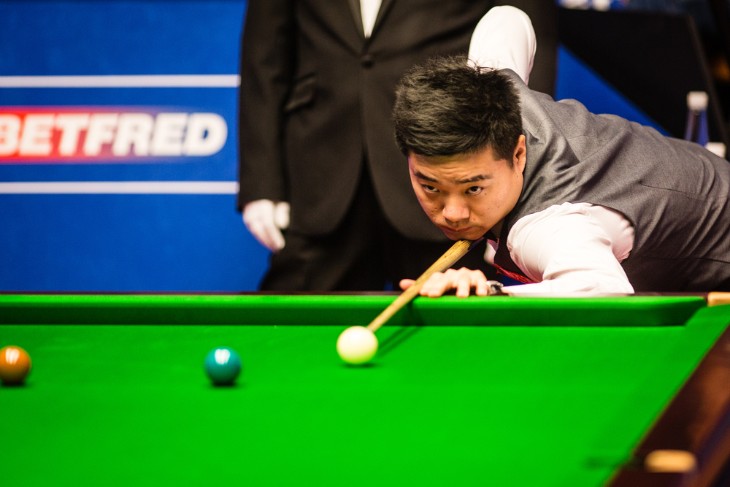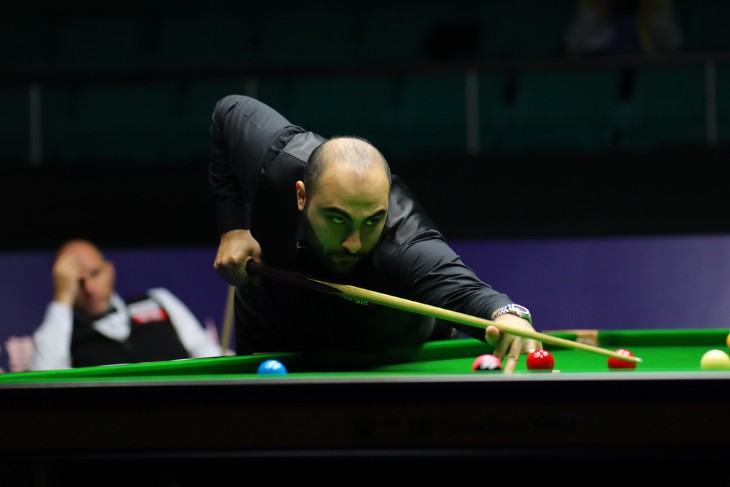- Understanding 'Score After Next Frame' Betting
- Key Factors Influencing the Next Frame's Outcome
- Analyzing Player Performance for Accurate Predictions
- The Role of External Factors in Frame Outcomes
- Utilizing Statistical Data for Score Prediction
- Experience and Intuition in Frame Score Betting
- The Impact of Match Stage on Frame Scoring
- Final Verdict
The world of snooker betting presents numerous opportunities, and one of the most intriguing is the 'Score After Next Frame' bet. This form of betting, which focuses on predicting the scoreline after the upcoming frame, requires not only a deep understanding of the game but also a keen sense of strategy.
For enthusiasts looking to dive into this specific betting arena, mastering the nuances of score prediction can be both a thrilling and rewarding endeavour.
Understanding 'Score After Next Frame' Betting
'Score After Next Frame' betting in snooker is an exciting way to engage with the sport, offering a unique challenge for bettors. This type of bet focuses on predicting what the score will be after the conclusion of the next frame in a match. Unlike other forms of betting that may focus on the overall winner or the highest break, 'Score After Next Frame' betting requires a more immediate and detailed understanding of the game as it unfolds.
What makes this form of betting particularly interesting is its specificity. You're not just guessing who will win the match or score the most points overall, but rather making a precise prediction about the very near future of the game. It's a dynamic form of betting that requires keeping a close eye on the match and making quick, informed decisions.
To be successful in 'Score After Next Frame' betting, it's crucial to have a deep understanding of both players' current form, their playing styles, and strategies. Bettors need to consider how these players have been performing not just over the season but in the specific match they are betting on. This requires a keen sense of observation and the ability to interpret how the game might progress based on the players’ recent actions and reactions.
Additionally, this type of betting demands an understanding of the psychological aspects of the game. Snooker is not just a physical game; it's also a mental battle. How a player is feeling, their confidence levels, and their ability to handle pressure can significantly affect their performance in the next frame, and consequently, the score.
'Score After Next Frame' betting in snooker is a challenging but rewarding aspect of sports betting. It combines the thrill of predicting immediate game outcomes with a deep engagement in the nuances of snooker, making it an exciting option for both seasoned bettors and enthusiastic followers of the sport.
Key Factors Influencing the Next Frame's Outcome
Several key factors play a crucial role in determining the outcome of the next frame in a snooker match. Bettors focusing on 'Score After Next Frame' bets should consider these to make informed predictions.
- Players’ Physical and Mental Condition: The physical and mental state of the players can greatly influence their performance. Physical fatigue, especially in longer matches, can lead to errors and poor shot selection. Similarly, a player's mental state, whether they are feeling confident or under pressure, can impact their decision-making and risk-taking on the table.
- Current Match Dynamics: The flow of the match up to that point can be a strong indicator of the next frame's outcome. If a player has been winning consecutive frames, they might have built up momentum, making them more likely to continue their winning streak. Conversely, a player who has lost several frames in a row might be struggling to find their rhythm, affecting their performance in the next frame.
- Playing Styles of the Contestants: The contrasting playing styles of the contestants can significantly dictate the frame's outcome. An aggressive player might score high but also take risks that could lead to mistakes. A more defensive player might play cautiously, focusing on safety shots, which could lead to a lower-scoring frame.
- Historical Performance in Similar Situations: A player’s historical performance in similar match situations can offer insights. For example, some players perform better when leading, while others excel at making comebacks. Analyzing past performances in similar situations can provide an idea of how a player might perform in the upcoming frame.

Analyzing Player Performance for Accurate Predictions
Accurately predicting the 'Score After Next Frame' in snooker requires a detailed analysis of each player's performance. This involves more than just a cursory glance at their past wins or losses; it demands an in-depth understanding of their current form, style of play, and psychological state.
The first step in this analysis is to look at how the players have been performing recently. This includes not just their victories and defeats but also the manner in which they have been playing. Are they playing confidently, making aggressive shots and clearing tables, or are they playing more cautiously? A player in good form, who is confidently potting balls, is more likely to score higher in the next frame.
The style of play is another critical factor. Some players are naturally aggressive, often taking risks to pot balls and win frames. This can lead to high-scoring frames but also increases the risk of mistakes. In contrast, more defensive players might focus on safety play, leading to lower-scoring frames. Understanding each player's style can give insights into how the next frame might play out.
It's also essential to consider the players' mental state. Snooker is as much a mental game as it is a physical one. Players under pressure, perhaps due to the importance of the match or their position in a tournament, might play differently than they would under less stressful conditions. A player who is feeling the pressure might make more mistakes, affecting the score in the next frame.
Finally, analyzing head-to-head statistics can provide valuable insights. Some players may have a psychological edge over their opponents based on past encounters. If a player has consistently performed well against their current opponent, they might be more confident, which could positively influence their performance in the next frame.
Predicting the 'Score After Next Frame' effectively requires a comprehensive analysis of players' recent form, playing style, psychological state, and history against their opponents. Bettors who can skillfully interpret these aspects of player performance stand a better chance of making accurate predictions in snooker betting.
The Role of External Factors in Frame Outcomes
External factors, often beyond the control of the players, can significantly impact the outcome of a frame in snooker. Recognizing these factors is essential for bettors aiming to accurately predict the 'Score After Next Frame'.
- Table Conditions: The condition of the snooker table plays a vital role. Factors such as the speed of the cloth, the bounce of the cushions, and even the humidity in the room can affect how the balls behave on the table. A faster cloth might lead to longer breaks and higher scores, whereas a slower table can result in more tactical, lower-scoring frames.
- Audience Presence and Reactions: The audience can also influence a player's performance. A supportive and enthusiastic crowd can boost a player's confidence, potentially improving their performance. Conversely, a disruptive audience or the pressure of playing in front of a home crowd can increase nerves, possibly leading to mistakes and fouls.
- Physical Health of the Players: A player's physical condition is crucial. Issues like fatigue, minor injuries, or even general wellness can affect their concentration, stamina, and shot execution. This is particularly evident in longer matches or tournaments, where endurance is tested.
- Match Schedule and Timing: The timing of the match in a tournament schedule can affect players' performance. For instance, playing late in the evening or having back-to-back matches might lead to fatigue, whereas a well-rested player might have a sharper focus and better control.
Utilizing Statistical Data for Score Prediction
Incorporating statistical data is a fundamental strategy when predicting the 'Score After Next Frame' in snooker. This approach provides a factual and objective basis for making informed predictions.
- Players’ Frame Winning Statistics: One of the most crucial pieces of data is each player’s frame-winning statistics. This includes their win rate per frame, which can indicate their consistency and likelihood of winning the upcoming frame. Bettors should look at these statistics over a season or tournament to gauge a player’s overall performance.
- Break Scores and Frequency: Another key statistic is the average break score of a player and the frequency of high breaks. Players who regularly score high breaks are more likely to win frames and influence the score significantly. This data can be particularly telling in predicting the potential score after the next frame.
- Head-to-Head Matchup Statistics: Statistics from previous head-to-head matchups between the players provide valuable insights. Some players may perform better against certain opponents, which can be a crucial factor in predicting frame outcomes.
- Recent Form and Performance Trends: The recent form of players, including their performance in the last few matches, can indicate their current state and likelihood of performing well in the upcoming frame. A player in good form is often more confident and likely to continue their winning streak.

Experience and Intuition in Frame Score Betting
Experience and intuition play a significant role in successful frame score betting in snooker. While statistical analysis is important, the instincts developed from watching numerous games can often be just as valuable.
Long-term followers of snooker develop an understanding of the nuances of the game that goes beyond statistics. This experience allows them to pick up on subtle cues during a match, which might indicate how a player is likely to perform in the next frame. For example, they may notice changes in a player's body language or shot selection that suggest a shift in confidence or strategy. These observations, while not quantifiable, can provide crucial insights into the likely outcome of the next frame.
Intuition, often honed through years of watching and analyzing snooker matches, can also guide betting decisions. This gut feeling can be particularly useful in situations where statistical data is inconclusive or when a match takes an unexpected turn. For instance, an experienced bettor might sense that a player is about to make a comeback based on their performance in the previous frames, even if their overall match statistics suggest otherwise.
Moreover, experience in frame score betting teaches the importance of context. Understanding the context of the match, such as the tournament stage, the players’ rivalry, or even the importance of the frame, can influence a player’s performance. Experienced bettors learn to factor in these contextual elements when predicting the score after the next frame.
Experience and intuition are invaluable tools in frame score betting in snooker. They complement statistical analysis and add depth to a bettor's understanding of the game. Bettors who can effectively combine their experience, intuition, and analytical skills are often more successful in predicting the outcomes of frames, making their betting experience both more enjoyable and potentially more profitable.
The Impact of Match Stage on Frame Scoring
The stage of a snooker match can significantly affect the scoring in individual frames, an important consideration for those betting on the 'Score After Next Frame'. Different stages of the match bring varying levels of pressure and strategy, influencing how players approach each frame.
- Opening Frames: In the opening frames of a match, players are often still gauging their opponent and the table conditions. They might play more conservatively as they settle into the game. This cautious approach can lead to lower scoring frames initially, as players focus more on safety play and less on aggressive, high-scoring shots.
- Mid-Match Frames: As the match progresses, players generally start to feel more comfortable and confident. This is often where the game opens up, with players more willing to take risks. The scoring in these mid-match frames can be higher, as players attempt to establish a lead or close a gap.
- Deciding Frames: The final frames of a match, especially in a close contest, are typically high in tension and pressure. Players might revert to a more cautious approach, similar to the opening frames, to avoid costly mistakes. However, in situations where a player is trailing and needs to score high to win, they may adopt a more aggressive strategy, leading to higher scoring frames.
- Player’s Experience and Composure: Experienced players who have played in many high-pressure matches may handle the stress of deciding frames better, maintaining their standard scoring rate. Less experienced players, on the other hand, might struggle with the pressure, which can affect their scoring ability in crucial frames.
Final Verdict
Predicting the 'Score After the Next Frame' in snooker is a complex yet intriguing aspect of sports betting. It requires a balanced approach that combines statistical analysis, understanding of player performance, and intuition.
By considering the players' current form, head-to-head statistics, playing styles, external factors, and the match stage, bettors can enhance their chances of making accurate predictions. This form of betting not only adds excitement to watching snooker but also challenges bettors to deepen their understanding of the game’s intricacies.




.webp)


 (1).webp)




















